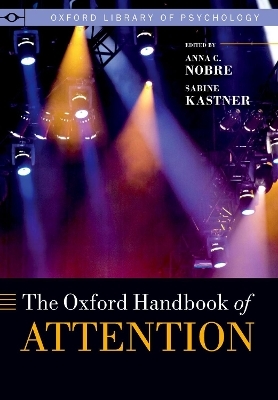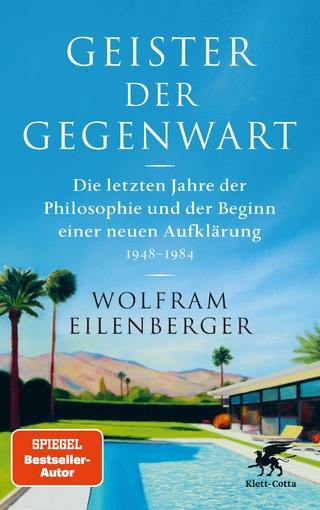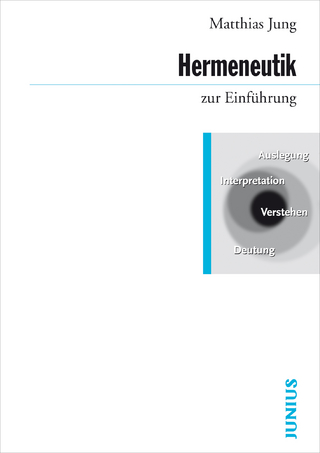
The Oxford Handbook of Attention
Oxford University Press (Verlag)
978-0-19-882467-1 (ISBN)
During the last three decades there have been enormous advances in our understanding of the neural mechanisms of selective attention at the network as well as the cellular level.
The Oxford Handbook of Attention brings together the different research areas that constitute contemporary attention research into one comprehensive and authoritative volume. In 40 chapters, it covers the most important aspects of attention research from the areas of cognitive psychology, neuropsychology, human and animal neuroscience, and computational modelling.
The book is divided into six main sections. Following an introduction from Michael Posner, The Oxford Handbook of Attention begins by looking at theoretical models of attention. The next two sections are dedicated to spatial attention and non-spatial attention respectively. Within section 4, the authors consider the interactions between attention and other psychological
domains. The last two sections focus on attention related disorders and on computational models of attention. A final epilogue chapter written by Nobre and Kastner summarizes the questions, methods, findings, and emerging principles of contemporary attention research.
For both scholars and students, The Oxford Handbook of Attention provides a concise and state-of-the-art review of the current literature in this field.
Anna Christina (Kia) Nobre is Professor of Cognitive Neuroscience at the University of Oxford, where she directs the Oxford Centre for Human Brain Activity and heads the Brain & Cognition Laboratory. She received her PhD (1992) from Yale University and completed postdoctoral training at Yale and Harvard Medical School before arriving to Oxford as a Junior Research Fellow at New College (1994) and taking up her faculty position in the Department of Experimental Psychology (1996). Dr Nobre uses a multi-methodological approach to investigate how perception and cognition are modulated according to task goals, expectations, and memories; and to understand how these dynamic regulatory mechanisms are affected by ageing, psychiatric conditions, and neurodegenerative disorders. She has published more than 100 articles in journals and books. Sabine Kastner is Professor of Neuroscience and Psychology at Princeton University, where she directs Princeton's neuroimaging facility and heads the Neuroscience of Attention and Perception Laboratory in the Princeton Neuroscience Institute and Department of Psychology. She earned an M.D. (1993) and PhD (1994) degree and received postdoctoral training at the Max- Planck-Institute for Biophysical Chemistry and NIMH before joining the faculty at Princeton University in 2000. Dr Kastner studies the neural basis of visual perception, attention, and awareness in healthy humans, patients with brain lesions and animal models and has published more than 100 articles in journals and books. Dr Kastner's contributions to the field of cognitive neuroscience were recognized with the Young Investigator Award from the Cognitive Neuroscience Society in 2005.
Part A: Introduction
1: Michael Posner: Current landscape and historical context
Part B: Theoretical Models of Attention
2: Jeremy Wolfe: Feature integration and guided search
3: Polly Dalton and Nilli Lavie: Perceptual/Executive load theory
4: Sabine Kastner and John Serences: A multi-level account of selective attention
5: Marsel Mesulam and Professor Anna Christina Nobre: Large-scale network model of control
6: Mark Stokes and John Duncan: Multiple-demand network and adaptive coding
Part C: Spatial Attention
7: Marisa Carrasco: Spatial covert attention: Perceptual Modulation
8: Jan Theeuwes: Spatial orienting and attentional capture
9: Diane Beck and Sabine Kastner: Neural systems of spatial attention (fMRI)
10: Martin Eimer: The time course of spatial attention: Insights from event-related brain potentials
11: Marlene Cohen and John Maunsell: Neuronal Mechanisms of Spatial Attention in Visual Cerebral Cortex
12: Jacqueline Gottlieb: Cellular mechanisms of attentional control: Frontal
13: Kelsey L. Clark, Behrad Noudoost, and Robert J. Schafer and Professor Tirin Moore: Neuronal mechanisms of attentional control: Frontal cortex
14: Yuri B. Saalmann and Sabine Kastner: Neural mechanisms of Spatial Attention in the Visual Thalamus
15: Richard J. Krauzlis: Attentional Functions of the Superior Colliculus
16: Charles Spence: Orienting attention: a crossmodal perspective
17: Charles E. Schroeder, Jose L. Herrero and Saskia Haegens: Neuronal Dynamics and the Mechanistic Bases of Selective Attention
18: Trevor Robbins: The neuropharmacology of attention
19: Michael Posner: Developing attention and self-regulation in childhood
Part D: Non-spatial Attention
20: Miranda Scolari, Edward F. Ester, and John Serences: Feature- and object-based attentional modulation in the human visual system
21: Stefan Treue: Object- and feature-based attention: monkey physiology
22: Kimron Shapiro and Simon Hanslmayr: The Role of Brain Oscillations In The Temporal Limits of Attention
23: Patrick Cavanagh, Lorella Battelli, and Alex O. Holcombe: Dynamic Attention
24: Anna Christina Nobre: Temporal orienting
Part E: Interactions between Attention and Other Psychological Domains
25: Luiz Pessoa: Attention, Motivation, and Emotion
26: Attention and executive functions
27: Earl K. Miller and Timothy J. Buschman: Neural mechanisms for the executive control of attention
28: Brice A. Kuhl and Marvin M. Chun: Memory and Attention
29: Christopher Summerfield and Tobias Egner: Attention and decision-making
30: Heiner Deubel: Attention and action
Part F: Attention-related Disorders
31: Geraint Rees: Attention and awareness
32: Theodore P. Zanto & Adam Gazzaley: Attention and Aging
33: Guiseppe Vallar: Unilateral Spatial Neglect
34: Sanjay Manohar, Valerie Bonnelle and Masud Husain: Neurological disorders of attention
35: Lynn C. Robertson: Balint's syndrome and the Study of Attention
36: Ian H. Robertson and Redmond G O'Connell: Rehabilitation of Attention Functions
Part G: Computational Models
37: Claus Bundesen and Thomas Habekost: Theory of visual attention
38: Laurent Itti and Ali Borji: Bottom up and contextual effects
39: Angela Yu: Bayesian models
Part H: Conclusions
40: Anna Christina Nobre and Sabine Kastner: Attention: Time Capsule 2013
| Erscheinungsdatum | 17.04.2018 |
|---|---|
| Reihe/Serie | Oxford Library of Psychology |
| Verlagsort | Oxford |
| Sprache | englisch |
| Maße | 169 x 248 mm |
| Gewicht | 2328 g |
| Themenwelt | Geisteswissenschaften ► Philosophie ► Allgemeines / Lexika |
| Geisteswissenschaften ► Psychologie ► Allgemeine Psychologie | |
| Geisteswissenschaften ► Psychologie ► Persönlichkeitsstörungen | |
| Geisteswissenschaften ► Psychologie ► Verhaltenstherapie | |
| Naturwissenschaften ► Biologie ► Humanbiologie | |
| Naturwissenschaften ► Biologie ► Zoologie | |
| ISBN-10 | 0-19-882467-X / 019882467X |
| ISBN-13 | 978-0-19-882467-1 / 9780198824671 |
| Zustand | Neuware |
| Informationen gemäß Produktsicherheitsverordnung (GPSR) | |
| Haben Sie eine Frage zum Produkt? |
aus dem Bereich


